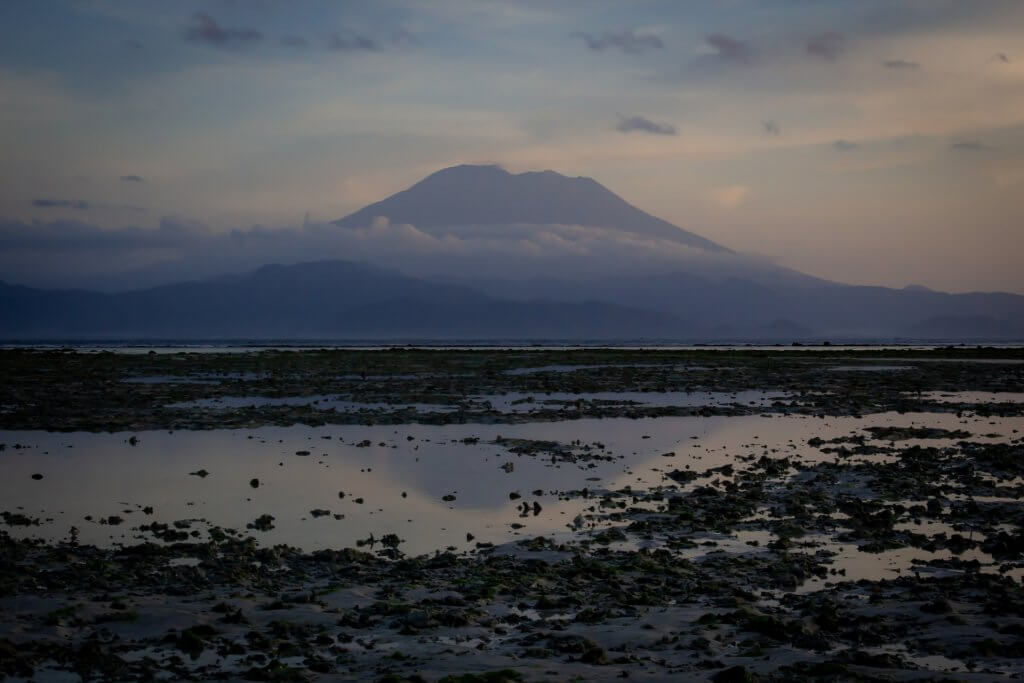Mount Agung is located in the district of Karangasem and currently active volcano in Bali, southeast of Mount Batur volcano, also in Bali. Mount Agung stratovocano is the highest point on Bali. It dominates the surrounding area, influencing the climate, especially rainfall patterns. From a distance, the mountain appears to be perfectly conical. From the peak of the mountain, it is possible to see the peak of Mount Rinjani on the nearby island of Lombok to the east, although both mountains are frequently covered in clouds.
Gunung Agung is an active volcano, with a large and deep crater that occasionally emits smoke and ash. With its summit reaching a height of 3,031 meters above sea level, Mt. Agung affects its surrounding climate. Its western slopes catch the rain clouds making the west side lush and fertile, while its eastern slopes remains dry and barren.
The Balinese believe that Mt. Agung is the abode of the gods, and the volcano therefore is revered as sacred. Mount Agung has huge spiritual significance to the people of the island, and is home to the Mother Temple of Besakih. It forms part of a chain of volcanos that make up the back bone of Bali. Balinese legend has it that Agung was created when the Hindu God Pasupati split Mount Meru (the spiritual axis of the universe) and formed Mount Agung with a fragment.

